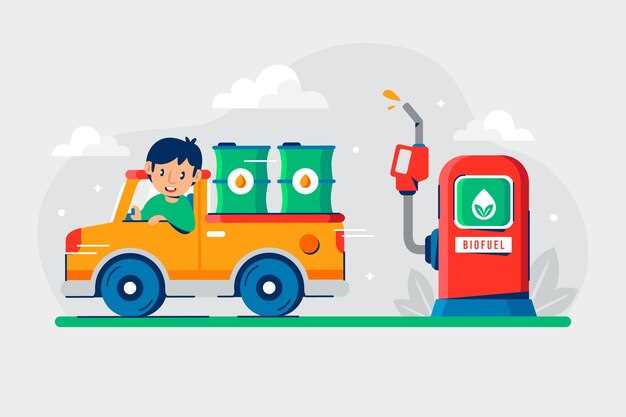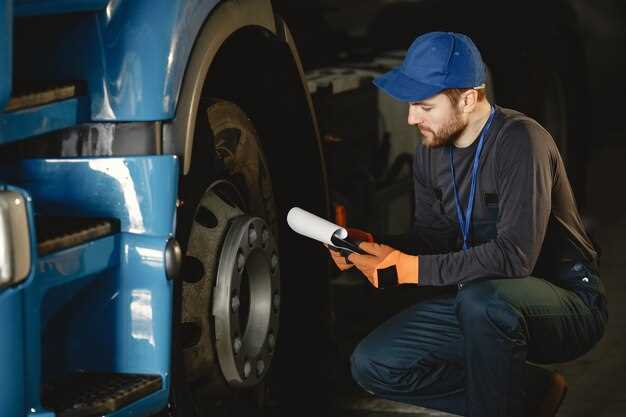
Every truck owner knows that weather can wreak havoc on vehicles, leading to costly repairs and decreased longevity. Rain, snow, intense heat, and UV exposure can all contribute to wear and tear, compromising both the appearance and functionality of your truck. Fortunately, with the right precautions and techniques, you can effectively shield your vehicle from the elements.
Implementing simple protective measures is crucial for preserving your truck’s value and performance. This article delves into essential tips and techniques that will help you safeguard your vehicle against weather damage. From using high-quality protective coatings to seeking shelter during extreme conditions, we will explore practical strategies designed to keep your truck in optimal condition.
By investing a little time and effort into weatherproofing your truck, you can ensure it remains a reliable companion for years to come. Understanding the risks posed by different weather conditions and knowing how to mitigate them can make all the difference. Read on to discover effective methods to protect your truck, allowing you to drive with confidence, no matter the climate.
Protect Your Truck from Weather Damage: Tips and Techniques
To safeguard your truck from the harsh effects of weather, it is essential to take proactive measures throughout the year. Start with regular maintenance checks; ensure that seals and gaskets are in good condition to prevent water leaks during rain or snow. Clean the undercarriage frequently to remove salt and debris, which can cause rust and corrosion.
Investing in a high-quality protective cover is another effective strategy. A well-fitted cover shields your truck from UV rays, snow, and rain, minimizing paint damage and reducing the buildup of grime. Choose breathable materials to avoid moisture trapping, which can lead to mold and mildew.
Wax your truck’s exterior regularly to provide a protective barrier against elements. A coat of wax not only enhances the shine but also repels water and dirt, making maintenance easier. Additionally, consider applying a paint sealant for long-term protection, as it offers advanced resistance to scratches and UV rays.
Ensure your truck’s windows and windshield are treated with a water-repellent solution. This will enhance visibility during rainstorms and reduce the likelihood of wiper damage. Regularly inspect your wiper blades for wear, replacing them as necessary to maintain effective performance.
For those living in areas prone to extreme weather, such as hail or heavy snowfall, consider a garage or carport. Parking indoors significantly reduces exposure to damaging elements and protects your vehicle from potential impact damage. If indoor parking isn’t an option, look for designated weather-resistant parking areas.
Finally, keep an emergency repair kit in your truck. This should include sealants, wipes for cleaning, and protective pads for potential impacts. Being prepared can help mitigate immediate damage from sudden weather changes and prolong your truck’s lifespan.
Choosing the Right Cover for Your Truck
Selecting the appropriate cover for your truck is essential in safeguarding it from the elements. The right cover can prevent weather damage, reduce wear and tear, and maintain your vehicle’s appearance over time.
First, consider the type of material. Truck covers are typically made of materials such as polyester, polypropylene, or nylon. Each material offers different levels of protection. For instance, heavy-duty fabrics like those made from waterproof nylon are excellent for preventing water penetration, while breathable materials are essential for reducing moisture buildup underneath the cover.
Next, assess the weather conditions in your area. If you live in a region prone to heavy rain or snow, a waterproof and durable cover is crucial. Conversely, if your truck is often exposed to the sun, look for UV-resistant fabric to protect the paint and interior from fading.
Size and fit are also significant factors. A cover that is too loose can allow dirt and debris to get underneath, potentially scratching the paint. Conversely, a cover that is too tight may tear more easily. Ensure you choose a cover specifically designed for your truck’s make and model to guarantee a snug fit.
Additional features can enhance protection as well. Look for covers with secure fasteners like straps or buckles, which help prevent the cover from blowing away in strong winds. Some covers also come with double-stitched seams for added durability and resistance to wear.
Finally, consider whether you need a full or partial cover. Full covers offer complete protection for your truck from top to bottom, while partial covers are suited for those who require only bed protection or cab covering.
By carefully evaluating the material, sizing, features, and type of cover that best suits your needs, you can effectively protect your truck from weather damage and prolong its lifespan.
Maintaining Your Truck’s Exterior: Best Practices

Regular maintenance of your truck’s exterior is essential for protecting it from weather damage and preserving its value. Here are some best practices to keep your truck looking great and functioning well.
First, wash your truck frequently. Dirt, salt, and grime can accumulate on the exterior, leading to corrosion over time. Aim to wash your truck at least once a month, using a mild soap and a soft sponge. Pay extra attention to wheel wells and undercarriage, as these areas collect debris and salt more easily.
Waxing is another important step in maintaining your truck’s exterior. Apply a high-quality car wax every three months to create a protective layer over the paint. Wax acts as a barrier against UV rays, rain, and other harmful elements, helping prevent oxidation and fading.
Inspect your truck’s paint for scratches or chips regularly. Address any damage immediately to prevent rust from forming. Use touch-up paint for small scratches and consider professional repair services for larger chips or dents.
Consider investing in a high-quality sealant or ceramic coat. These products provide a long-lasting protective layer that enhances the gloss of your paint while effectively repelling water and contaminants. Unlike traditional wax, these coatings can last for several years when applied correctly.
Park your truck in a garage or use a vehicle cover when not in use. This shields your truck from direct sunlight, rain, and snow, reducing the risk of fading, rust, and other weather-related damage. If parking outside is unavoidable, try to park in shaded areas whenever possible.
Pay attention to the truck’s trim and plastic components. Use specialized cleaners and conditioners designed for these materials to prevent them from fading or becoming brittle. Regular maintenance keeps these parts looking new and can prevent costly replacements.
Lastly, avoid using automatic car washes with brushes that may scratch the paint. Instead, opt for touchless washes or hand wash your vehicle to minimize the risk of damage.
By following these best practices, you can effectively maintain your truck’s exterior and prolong its lifespan, ensuring it remains in excellent condition despite varying weather conditions.
Preparing Your Truck for Severe Weather Conditions

Severe weather can pose significant risks to your truck, affecting its performance and longevity. Proper preparation is essential to minimize damage and ensure your vehicle remains safe and functional. Follow these guidelines to protect your truck during extreme weather.
-
Inspect Your Truck Regularly:
- Check the battery for corrosion and ensure connections are tight.
- Inspect hoses and belts for wear; replace if cracked or frayed.
- Examine tire tread depth and pressure to ensure optimal traction.
-
Wash and Wax Your Truck:
A thorough wash removes dirt and debris that can trap moisture and cause rust. Applying a coat of wax provides an additional layer of protection against harsh elements.
-
Protect the Interior:
- Use floor mats to guard against water and mud ingress.
- Apply a UV protectant to dashboard surfaces to prevent cracking.
- Consider using seat covers for added protection against moisture and dirt.
-
Check Weather-Related Equipment:
- Ensure windshield wipers are functioning and replace blades as needed.
- Keep washer fluid topped up, particularly with a solution designed to prevent freezing.
- Confirm that defrosters and heaters are in working order for visibility in snowy conditions.
-
Use Protective Covers:
A high-quality truck cover shields against hail, snow, and UV rays. Ensure that the cover fits properly to avoid scratches and damage during windy conditions.
-
Store Your Truck Wisely:
If possible, park your truck in a garage or under a carport to protect it from the elements. If outdoor parking is necessary, avoid parking under trees that may drop branches or debris.
-
Plan for Emergencies:
- Keep an emergency kit in your truck including food, water, and medical supplies.
- Ensure jumper cables and a spare tire are accessible.
- Familiarize yourself with local weather conditions and have a plan for severe weather alerts.
By taking these proactive steps, you can significantly reduce the risk of weather damage to your truck and ensure it remains reliable, regardless of the conditions. Regular maintenance and preparation will pay off in the long run, keeping you and your vehicle safe.




































